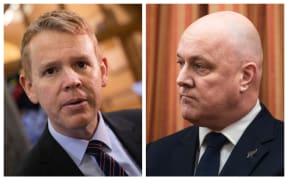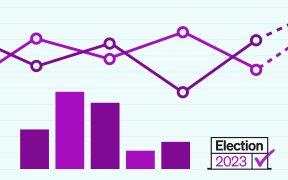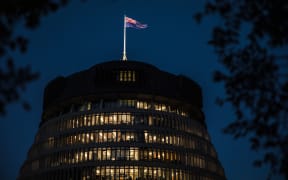By Bryce Edwards*
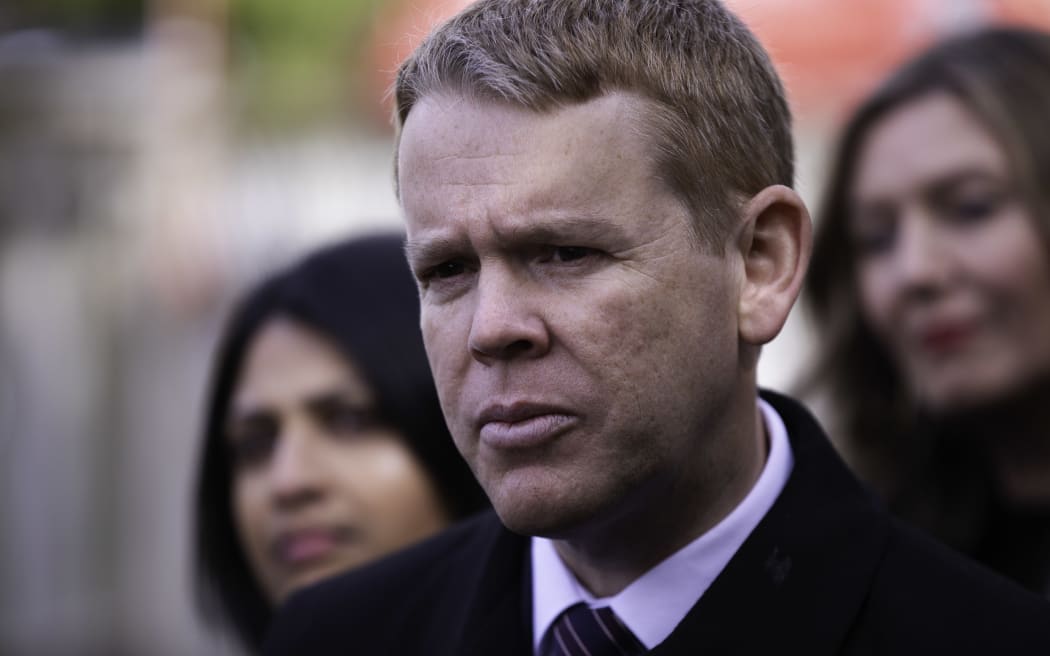
Chris Hipkins Photo: RNZ / Angus Dreaver
Opinion - Labour appears to be in something of an electoral death spiral. The four-point drop in last night's 1News Verian poll to just 29 percent - together with National's bump up to 37 percent - suggests that the gulf between the left and right blocs is now opening up, and will be difficult to reverse.
Perception is going to be a big part of Labour's problem. When a party in government drops into the 20s just weeks out from voting, the psychological effect can be huge. It will affect both voters and politicians.
Increasingly, the public will not believe that Labour can win this election. Such a mood will risk becoming a self-fulfilling factor in the campaign.
Just as "success begets success", for Labour a poll result like this will threaten to fuel a further deterioration in support below 29 percent. It shapes the whole mood of the campaign, sapping momentum and motivation for those on the government side. What's more, when a party is losing, the despair can cause infighting and panic, which just makes everything much worse.
In this regard, Herald political editor Claire Trevett says today: "Hipkins' trouble is that once the polling starts to slide, it is very difficult to reverse it. It is also very difficult to hold on to the discipline, unity and enthusiasm that are needed to reverse it."
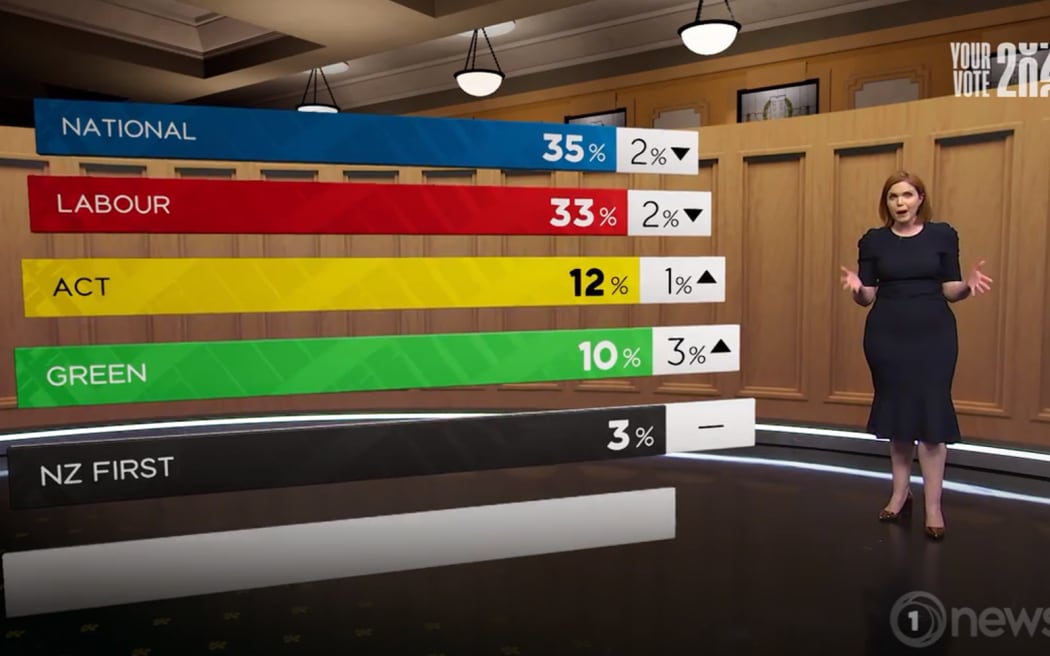
1News political editor Jessica Mutch-McKay presents the results of the July 2023 1News Verian poll. Photo: TVNZ
A devastating blow to Labour's chances
The 1News poll isn't the first to put the Labour government into the 20s during the election campaign. In the last month, the Roy Morgan poll put Labour on 26 percent, the Guardian-Essential poll said Labour was on 29 percent, and Curia put Labour on 27 percent.
Labour was able to dismiss these poor polls as being less robust, and they could point to their own poll company, Talbot-Mills, putting Labour on 32 percent support.
But the 1News poll is the big one that gets taken most seriously - mostly because it's seen by more of the public than any other. And unfortunately for Labour its result can't be painted as an aberration - this is the fifth 1News poll in row showing Labour going downwards. There's no mistaking that the pattern in this poll, together with most of the others, is to show an overall and steep downward slope.
The race had been looking close for much of the year. When Hipkins took over as PM in January his party was at 38 percent, and ahead of National. But since then, he's haemorrhaged about a third of that support, making the race look lost.
This latest poll, like other recent ones, shows National being able to easily form a government with Act. NZ First is also rising in the polls - at 4 percent last night - providing National with potential other options for forming a government.
Winston Peters has ruled out helping Labour form a government, and so if his party is returned to power, it's going to be extremely unlikely that Labour will be able to govern.
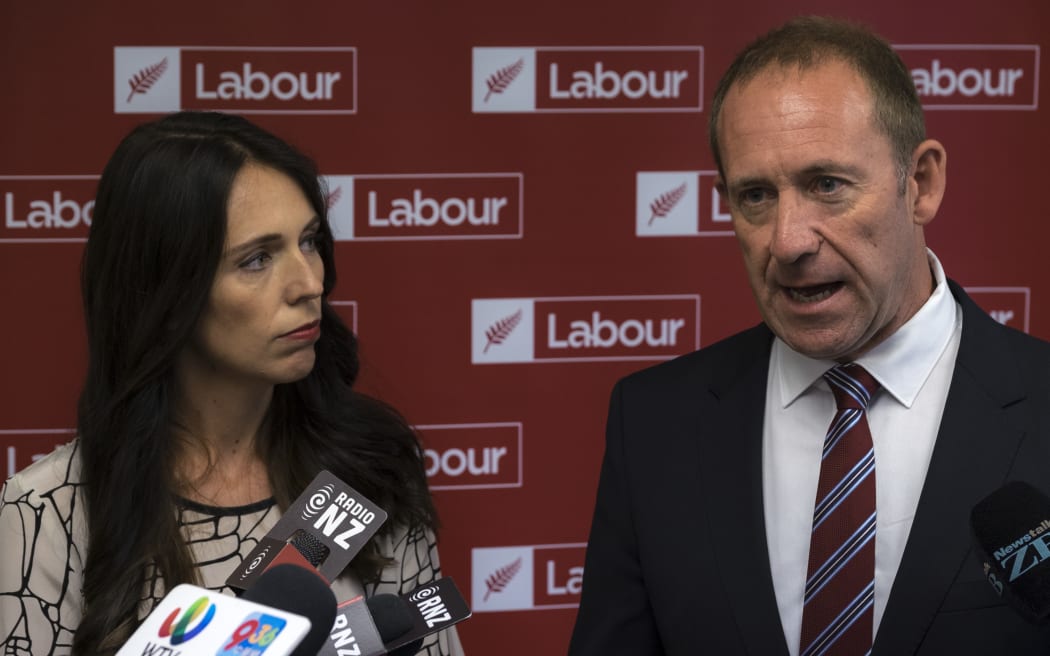
Jacinda Ardern replaced Andrew Little as Labour leader shortly before the 2017 vote. Photo: RNZ / Brad White
Should Labour replace Hipkins?
Much of the commentary on the 1News poll points out that Labour has dropped to the point where leaders are normally replaced. Attention has been drawn to the fact the 1News poll puts Labour at the lowest level since 2017 when the leader Andrew Little stepped down, leading to massive recovery of support under new leader Jacinda Ardern. Others point to Simon Bridges being rolled as National leader in 2020 when support dropped this low.
But Chris Hipkins is not in the same situation - commentators generally acknowledge that he's still the best option for Labour in 2023. Toby Manhire says that even if Labour wanted to replace Hipkins, there is no one capable of doing so, as the only two real candidates for doing better, Michael Wood and Kiritapu Allan, have been removed from Cabinet. Deputy Prime Minister Grant Robertson is probably the only option, and he also looks increasingly tired and uninspiring.
It is a problem, however, that the latest 1News poll puts Hipkins' support as preferred PM at only 21 percent, having dropped 3 points. This is neck-and-neck with Christopher Luxon on 20 percent. Previously, Labour campaign strategists had been relying on Hipkins' significantly greater popularity over Luxon. That lost advantage means that Labour can only really rely on policy to try to win the election.
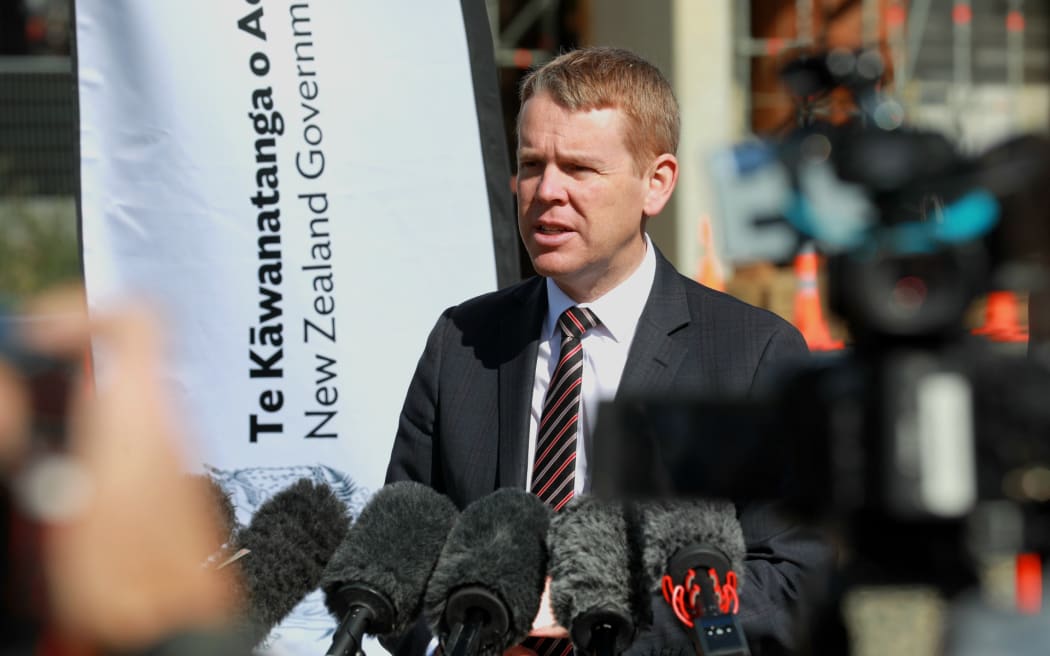
Photo: RNZ / Nick Monro
Is policy to blame for Labour's decline?
The latest poor poll for Labour is being widely viewed as a negative verdict from voters on the party's GST-off fresh food policy. Claire Trevett argues the poll "indicates the GST policy was seen as an attempt to offer something that looked more generous than it was, purely for the sake of votes."
The 29 percent result might also be seen as a verdict on Labour's lack of inspiring policy in general. In the last week or so, the party has suddenly put out a flood of policies - most of which have either been underwhelming, or appeared to be an attempt to shift into National-lite territory: An end to Covid restrictions, financial literacy education, standardised teaching of the basics in schools, transport spending, increased parental leave, and vaping regulation.
Stuff political editor Luke Malpass says today, "A flurry of policies to hug the centre and try to convince voters to back the centre-left party again appear to not be working."
Trying to outflank National on key issues is always dangerous, risking losing Labour's differentiation. The polls also suggest that jettisoning traditional progressive policies like capital gains and wealth taxes is also not working for the party. If anything, this approach has just enraged traditional supporters.
Of course, some on the left will just move over the Greens. At the moment, the Greens are indeed picking up some of the disillusioned Labour vote, but much of it seems to be shifting elsewhere. One analysis of poll respondents preferences shows that for every voter lost to the Greens, one is going to National as well. Nearly as many are shifting to be "undecided".
So what does Labour do now? The Spinoff's Toby Manhire asks today why Labour won't announce anything bold and big. His own suggestion - free dental care for all.
However, even if Labour manages to fight back with bolder and more inspiring policies over the next few weeks, it might just be too late. After six years of being in government, Labour has developed a reputation for not being able to deliver, even to its own supporters. Hence, more promises on the campaign trail aren't exactly going to be fully believed and embraced, even by those on the progressive side of politics.
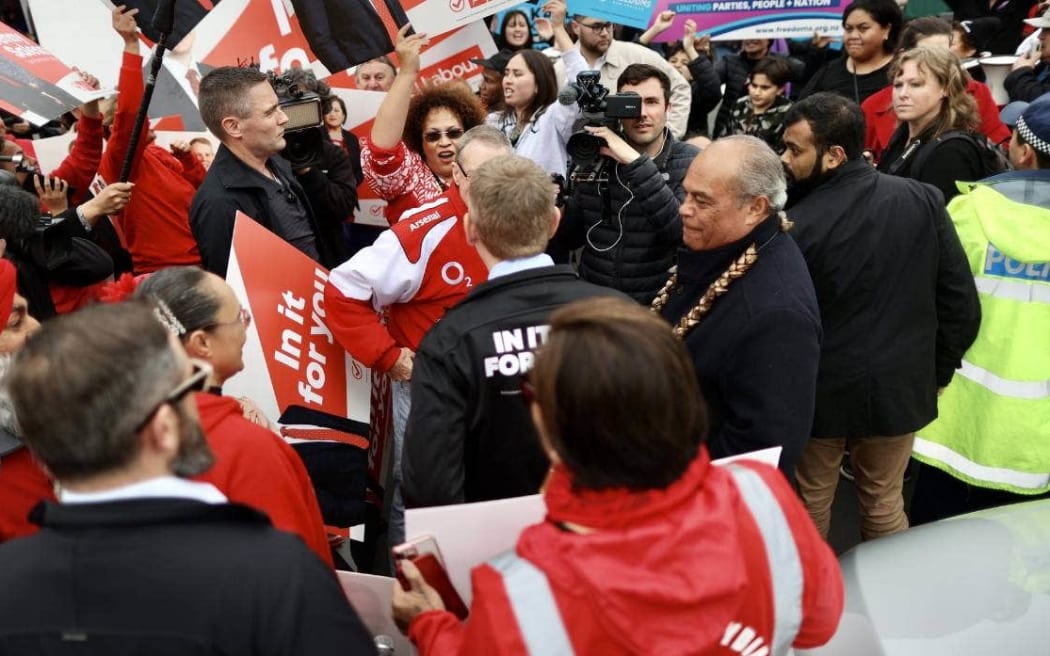
Labour supporters and Vision NZ protesters followed Chris Hipkins around the Ōtara Markets. Photo: Stuff / Lawrence Smith
Voters are gloomy
There is no doubt that the economic recession and the rising cost of living have played a significant part in Labour's declining popularity. The 1News poll asked voters which issues were most likely to influence their voting choice, and 48 percent pointed to the cost of living. The next biggest issues were a long way off - crime at 14 percent, and health care at 13 percent.
If you take one of the cost of living issues - rising mortgage rates - there is some sign that voters blame the government for this. A poll undertaken this month by Curia Research for corporate clients - they also poll for the National Party - asked whether or not voters blamed the government for higher mortgage rates.
About two-thirds (64 percent) said the government had either contributed "a great deal" or "a fair amount" to the problem, compared to only 22 percent who thought the government's contribution to increasing mortgage rates was either "Not very much" or "Not at all". The poll showed that the public also blamed other factors such as the global economy and the Reserve Bank.
Curia, who also polls for the Taxpayers Union, also surveyed recently on levels of satisfaction with public services. As reported by Stuff's Luke Malpass, dissatisfaction with government services appears to be skyrocketing.
According to the survey, voters say public services have got worse since 2020 in the following key areas: Health (70 percent say it's worse), Criminal Justice (64 percent), Education (57 percent), Transport (47 percent) and Welfare (37 percent). Notably, most Labour voters also say things have got worse.
It is in this context that we can better understand Labour's current electoral doldrums. Regardless of whether it is fair or not, there is a perception that things are getting worse, and that the current government is at least partly to blame.
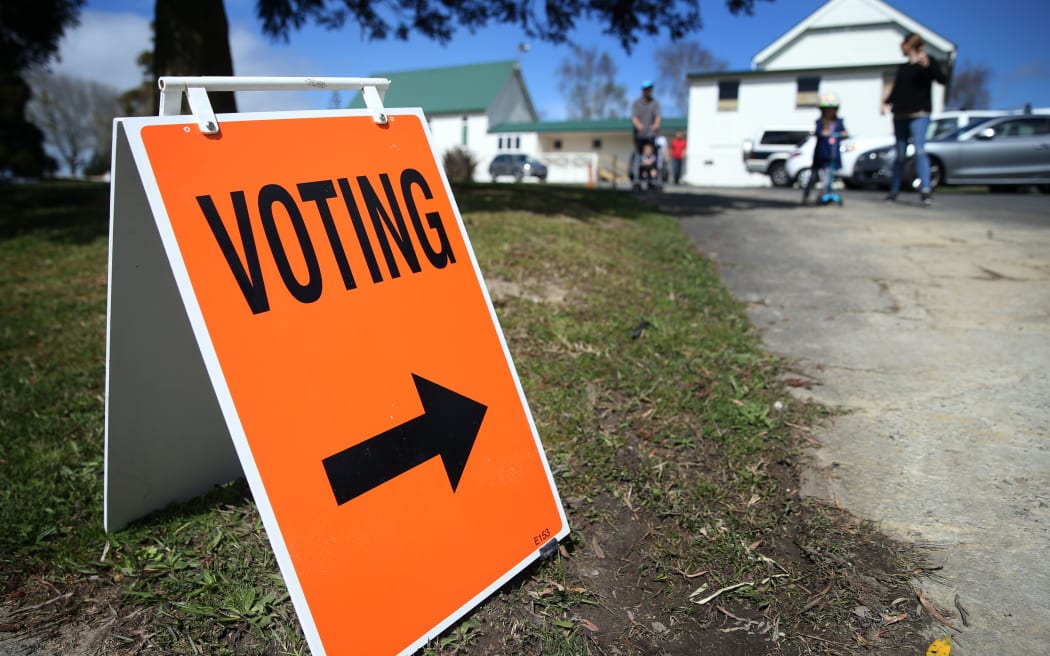
The election is just over a month away. Photo: AFP or licensors
Could Labour's support collapse?
Chris Hipkins is talking today about turning the tide around over the next few weeks and beating National. Few will be convinced that he can do this. In fact, there's every chance it will only get worse. Labour might well struggle to mobilise and motivate its activists and voters.
A low voter turnout at the election is therefore Labour's nightmare. Supporters are probably starting to tune out. Therefore, it's vital that the party brings forward anything it's holding back to give their chances a boost. They desperately need to show the public that they are still competitive, and that the election result is not now a foregone conclusion.
We've seen in other elections what happens when parties start tanking, and a death spiral occurs. In 2002 the Bill English-led National Party dropped below 21 percent in the final vote. And last election Judith Collins crashed National to only 25 percent.
Of course, the big differences is that those failing parties were in opposition, up against extremely popular prime ministers. That isn't the case at the moment - Hipkins is taking Labour into a campaign defending a 50 percent win at the last election, up against a National leader that is relatively inexperienced, unpopular and uninspiring.
Despite having the biggest caucus in political history, there is every sign that a big defeat is coming for Labour. Labour's support from 2020 could even halve in this election - which would be something for the record books. It would also be a bloodbath for the Labour caucus, with senior MPs on the party list out of Parliament.
You can even bet on this. Although in New Zealand gambling on politics is illegal, the Australian TAB is offering bets on our election outcome, and the odds they are offering are quite instructive about what might happen.
At the last election, the bookies gave National very long odds - paying about $5 for every $1 bet on National winning, whereas they were only offering Labour bets $1.16. This time around, bets on National winning the election and forming a government are paying out $1.25 for a $1 bet, while the TAB is offering $3.75 for a Labour win.
It's hard to disagree with those odds. Although the Australian TAB is promising a big payout to anyone successfully backing a Labour win, it's unlikely that you'd find many in Labour willing to take that gambling bet.
* Dr Bryce Edwards is the Political Analyst in Residence at Victoria University of Wellington. He is the director of the Democracy Project.
